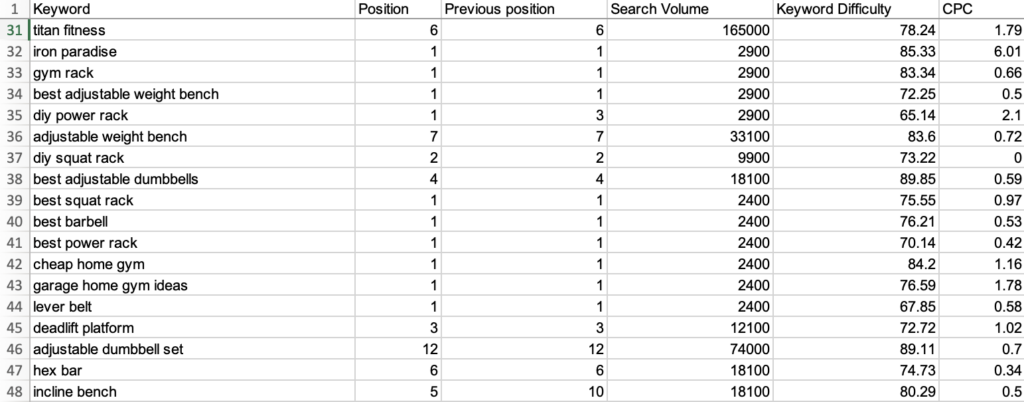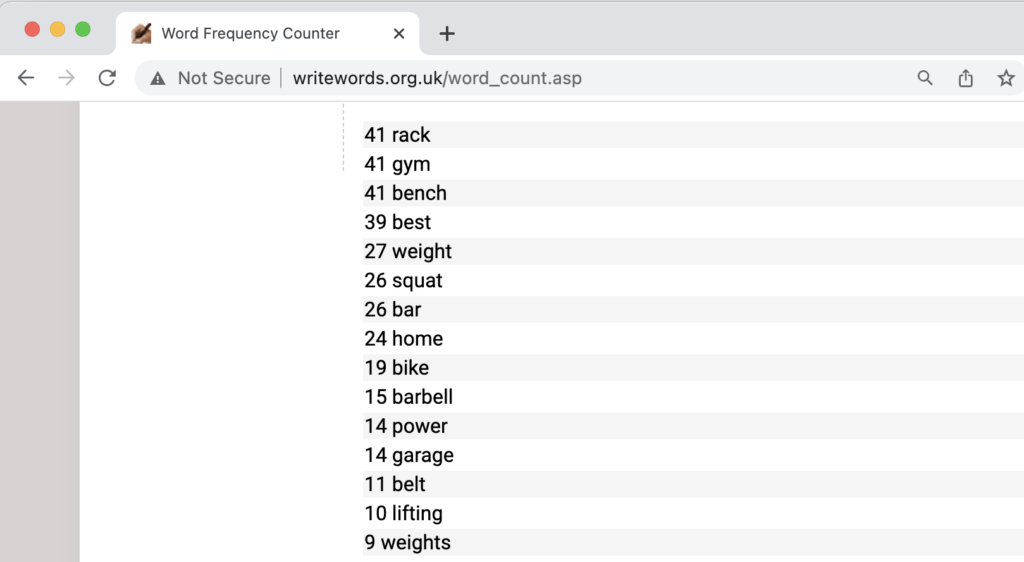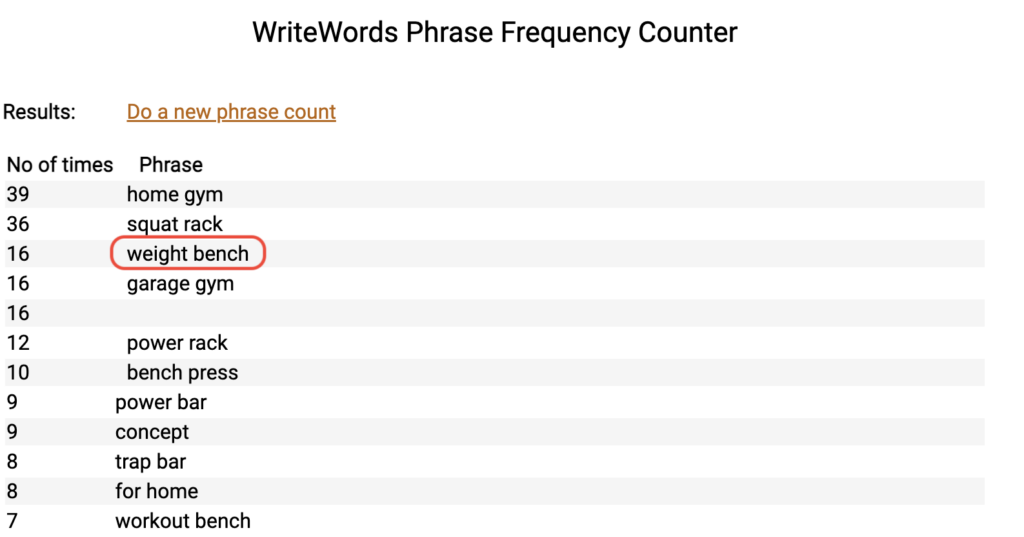iS kEyWoRd ReSeArCh sTiLl ReLeVaNt iN 2023?
Yes.
Like everything else content, it has developed and evolved since the 2010s, but keyword research is still important because it keeps you from wasting time creating content that no one wants, and no one will likely see.
If you already know how to write high-quality content, combine that with robust keyword research, and you can expect at least 50% of your pages to rank and subsequently convert your readers to customers.
Now, you can always roll the dice by creating content that “creates keywords”.
However, the truth to this strategy is that it’s only as effective as your knowledge of your customer’s problems.
Even if you’re aware of your customer’s pain points through industry experience, without keyword research you are fighting your competitors with one arm tied behind your back when researching topics to write about.
In this article I’m going to explain:
Why Keyword Research is still the most important piece of the SEO puzzle.
Almost everyone that has a cursory idea of SEO believes SEO is littering keywords into some bland, barely relevant content and voila!
You rank.
While that notion false, keyword research is still undeniably, definitely, and undoubtedly the most important part of SEO.
Here’s why:
1. It determines everything
The thing is, you could have the best UI in the world, amazing technical optimizations, all the backlinks you can dream of, a heaven-sent content team, and a world-endingly great product, but if your website is not targeting relevant keywords, guess how many buyers you’re going to get?
0.
You need relevant keywords before you start creating your:
- Audience personas
- Homepage
- Service pages
- Blog posts (I shouldn’t even need to mention this one..)
- Landing Pages
Remember your website is a tool to help you get your services in front of the right people, so you cannot just create pages with random headings – unless you’re just using your site as a brochure.
2. Poor keyword research will not target the right audience
If you half-bake your keyword research, and create audience personas, service pages, blog posts, etc., around those keywords, you might end up targeting the wrong audience altogether.
If you are targeting the wrong audience, you might see traffic, but you won’t see any conversions on your website, and all that traffic without any conversions would a MASSIVE waste of time, money, and energy.
Not to mention, imagine 6 months can easily go by before you realize you haven’t chosen the right keywords.
When doing keyword research, there’s no such thing as being sure enough.
Double check, triple check, do whatever, but make sure that you have the BEST possible keyword choices before you hunker down to start creating content.
3. Keyword research reveals your customer’s pain points
I’ll explain this through an example, let’s say you are a home cleaning company in Libertyville, Illinois, and you’re confused about which services to list on your website.
Through your experience in the industry, you figure, “home-cleaning services” and “housekeeping” seem like safe bets, so you go ahead and create pages for them.
However, you miss more niche services like “move-out cleaning”, “post-renovation cleaning”, “eco-friendly cleaning” etc.
If you’re a local service provider, you miss out on what is essentially low hanging fruit because your competitors likely didn’t catch these keywords either, and even if they did, it won’t be more than a handful of competitors.
So, let’s say you had 100 competitors.
Out of which, 10 or even 20 have websites optimized around these keywords.
That’s 80% of your competitors you could have just leapfrogged over, but didn’t because you were slapdash in your keyword research.
The goal of SEO is to make money, not “leave it on the table”.
Our keyword research process
If you have done keyword research before, you know that a lot of keywords, especially LTKs with similar intent will repeat themselves in different phrases.
Clustering these similar intent keywords will help you better understand your customers issues from most to least popular.
In fact, the following keyword-research strategy is actually a keyword-research + clustering strategy.
Step 1 – Create a Master List
Start by collecting as many keywords as possible. This master list is going to be a compilation of all the relevant keywords from you can find.

Some sources that I use are:
- SEO suites (SEMrush, Ahrefs, Answerthepublic, etc.)
- Pre-existing keywords (GSC)
- Competitor keywords
- Creating your own little mental list of keywords and get their kw data
- Google kw planner
- People also ask, google autocomplete, related searches on the SERPs
- Wikipedia, reddit, industry forums and blogs
The keyword data you pull from the SEO suite will fill the majority of the master list, and that’s fine.
Just make sure you have enough queries, so that you don’t need to go back and repeat this step again.
Often times, I will collect over 60,000 queries in the master list.
Once you’ve got your list of raw queries, remove the duplicates.
You can use an excel/google sheets formula like RemoveDupeWords2 to take care of this. Once you do this, we’ll move on to the next step.
Step 2 - Analyze the words and phrases
All right, follow along very carefully here because this is where it gets confusing.
After removing the duplicates, you will separate each query into the individual words that comprise the whole query to determine which words are appearing most frequently.
For example, you will separate “best fall hiking gear” into “best”, “fall”, “hiking”, and “gear”.
The purpose to doing this is to reveal which individual words are repeating themselves most frequently, so we can ascertain their popularity.
Doing this is for your entire list is not difficult.
Just copy your all your queries and insert them in a word frequency counter like WriteWords frequency counter.
That will tell you something like:
Rack is appearing 41 times
Best 39
Weight 27
Squat 26
Home 24
Etc.

Copy all these word occurrences in a google sheet.
Now individual words alone will not reveal much. Just knowing that “Weight” and “bench” appear 27 times and 41 times individually doesn’t exactly give you a topic to write about.
So, your next step is to run a similar analysis for phrases.
To do this, select the phrase frequency counter in WriteWords. You’re going use it to pull phrases with 2, 3, and 4 words in length.
This will help you see actual topics.
For example, in my phrase analysis “weight” and “bench” appear together 16 times as the phrase “weight bench”.

Once you’ve run your words through the phrase frequency counter, copy all the returned phrases and their frequencies into a google sheet.
Step 3 - Assign values to your phrases (Optional)
If you’ve got limited industry knowledge, do this. Otherwise, you can skip straight to step 4.
Once you have copied all your phrases and their frequencies into a google sheet, assign them a word count in a separate word count column.
For example, “weight bench” will have 2 words in its word count column.
Use the COUNTA function: =COUNTA(SPLIT(B2,” “)) to automate this. It will count the number of words in a cell.
I have assumed you have pasted your phrases in column “B” here.
Once you’ve got your list of phrases with their word counts, the next step is to assign each a phrase a value to inform its importance.
The longer a phrase is, the more niche the topic, and the higher the likelihood that you can rank and convert readers if you write about it, so, you want to give more importance to phrases with more words even if they have fewer occurrences.
To do this, you’re going to take the number of words in a phrase, raise it to a power and multiply that figure by the number of occurrences that phrase has.
For example, “Outdoor chair” has 2 words, occurs 53 times, and we’re raising our list to a power of 2
So, it’s value is 2^2 X53 = 212
You can use a simple math formula in google sheets for this.
Take the cells in your word count column, raise them to a power and then multiply them against their occurrences.
You can mess around with a few different powers to raise your phrases to, so you’re getting a good mix of query lengths. You don’t want to raise the power so high that you only get very long phrases.
Neither do you want it so low that the occurrences are outweighing the query length.
This will give you a quantitative measure of the importance of each phrase, which you can then use to generate word stems.
Step 4 - Generate word stems
Refer to the phrase occurrence list and word occurrence list to note 30 frequently occurring words and phrases you think are vitally important topics for your business.
For example, “hiking”, “gear”, “how should”, “best”, “fall” etc. are important for me so I will note them down. “For”, “if”, “when”, etc. are not, so I will leave them out.
The important words you list will now be known as word stems.
Now, we’re going to use these word stems to actually create keyword clusters.
To do this:
1. Go back to your master list. Copy just the keywords and their search volumes and paste them into rows in a new sheet.
2. Then take the word stems, and paste them into columns, not rows.
Now, your first two columns A and B should be the keywords (A) and their search volumes (B), and subsequent columns should be your word stems.
Next step.
You’re going to choose one of your word stems and run the following function in Google Sheets.
=IF(RegExMatch(A5,”outdoor”),”YES”,”NO”)
This will reveal which of the keywords from the list include your word stem word. You’ll need to run this formula individually for every word stem, and it will keep revealing YESes and NOs to you.
Once you’ve run the formula for every stem, use “Find and replace” to remove all of the NOs.
Step 5 – Group your keywords
After you’ve got your columns of YESes, you can basically copy the YES keywords in each column into another sheet, and then narrow them down for search intent by manually sub-categorizing them or running another RegEx function for a phrase or word.
This will give you about 150 – 200 different search intents to target in your niche, which should keep you going for a while.
How to make the most of your keyword research
1. Cover your keywords don’t stuff them.
This should go without saying but, once you’ve got an actionable list of keywords/queries, create content that covers them in-depth and detail.
DO NOT create whatever you were going to create anyway and then just randomly litter keywords within the content.
Good keyword coverage i.e., content that is actually relevant and adds value incline Google to rank you and establish you as an expert in your space.
Keyword stuffing will just get you penalized.
2. Leverage keywords to help you understand your customers better instead of creating exact match topics and titles.
Keyword research reveals what your customers are talking about in the context of your business.
So, if you have an LTK that reads “best gear fall camping”, your title should not be exactly that.
Instead, it should be something that actually makes sense like, “10 Essential Items for Camping This Fall”
With that your keyword research and clustering is complete.
Since 90% of your competition is not going this far with their keyword research, this instantly gives you an edge over your competitors.
Need help with your content?
Not sure you’re doing it right? Let’s help you improve your content.
